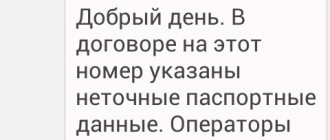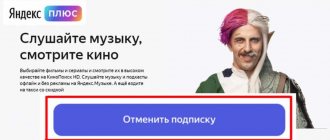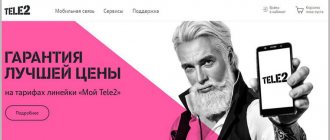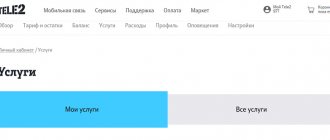Mobile operator subscribers regularly find strange messages in their inbox list where the sender indicates an unknown short number. In MTS, mailing is carried out from 6954, where in SMS, instead of the usual text, you can see Latin letters and numbers. Everything is transparent - there are no links to third-party resources or requests in them. In fact, such a notification from MTS indicates a purchase on the Play Market. Despite the awareness of users, the number of requests asking “how to get money back” is only increasing.
What SMS messages come from number 6954
From number 6954, subscribers receive SMS messages with very strange content in the form of numbers and letters of the Latin alphabet. The combination includes a large number of symbols that do not carry any semantic meaning. The SMS contains no links to third-party websites and notes that the notification to number 6954 was sent by the user himself. Most often, such SMS arrive in approximately the following format: DCB:Y3890...
If you receive an SMS from service number 6954, it means a payment was made from your mobile phone for some product on Google Play. These can be paid programs, games or in-game currency. This message is an electronic receipt confirming the purchase. The first three DCB characters in an SMS message mean “Direct carrier billing” - translated as “direct method of paying for content.” The service number belongs to Google, which uses it to send checks electronically.
Some authoritative sources report that at the moment in the Russian Federation the combination of the mobile operator MTS and the Google Play Store is not working in the best way. The message may arrive with a significant delay or may not arrive at all on the phone of the user who made a purchase in the Play Market. Often the message arrives only a few days after payment for a particular product, which makes identifying the sender much more difficult.
What kind of messages
The text in the format “DCB_Association:Y3890” confirms that the subscriber of the cellular company ordered and paid for the product on Google Play. The shopping list may include applications, games, music, movies. In essence, the information in SMS is an electronic check. The short number 6954 is specially reserved by MTS for the operation of a virtual store, where, after making purchases, a receipt is sent to the Google Play subscriber's number. Some users note that they encountered delays in the delivery of payment messages, sometimes information about the transfer of funds was not received at all, so many could place the order again.
How to get a refund for a purchase on the Play Market
Children often make purchases on Google Play using mobile phones belonging to their parents. In such a situation, you can refuse the purchase and return the money, but this must be done within two hours from the date of payment. It is worth considering another important point - if a product paid for in the Google Play Store has not been installed within two hours, the purchase will be canceled automatically. To get a refund you need to do the following:
- Go to the “My Applications” section.
- Select the purchased program or game.
- Click on the “Return Purchase” button.
- Remove the purchased product and follow the instructions.
If you receive an SMS message from number 6954, you can return the money by directly contacting the developer. Contacts are on the program page. To create a request for a refund using a web browser, you should follow the following procedure:
- Open the website of the online store play.google.com, click on the “Settings” button (gear icon).
- Go to the "My orders" section
- Place the cursor over the purchased application and press the “Menu” key with the image of three dots.
Then you need to select the line “Report a problem” and write in the form that opens about your request to return the money. All you have to do is click on the “Submit” button.
legislation
Is there any basis for such claims, strictly speaking? After all, at some point the user voluntarily performed some action that ensured his place as a victim in the chain (relative to the short number 6954). This is precisely the position that telecom operators adhere to when a subscriber, outraged by the loss of money, begins to search for the truth.
And this is called the federal law of July 23, 2013 N 229-FZ “On Amendments to the Federal Law “On Communications”.
In it, Article 2 of the Basic Law is supplemented with subclause 34.1, which defines what “content services” are.
The legislator made this definition as general as possible, practically fitting into it everything that is not the actual connection. Those. if the user using the phone and through the telecom operator’s channels receives, quote,
...reference, entertainment and (or) other additionally paid information...", gets the opportunity "... to participate in voting, games, competitions and similar events...,
Then he, the user, receives a content service. And it, in turn, being provided with the participation of third parties, falls under the addition of paragraph 5 of Article 44 of the Federal Law “On Communications”, which prescribes a mechanism for protecting the consumer by:
- firstly, the possibility of creating, at his request, a separate account to pay only for content services;
- secondly, the requirement to obtain explicit consent to receive such services;
- thirdly, about comprehensive information, including prices and names of suppliers, about these services before obtaining consent.
Another addition, established by 229-FZ, to paragraph 5 of Article 54 of the Basic Law, states that services provided in violation of any of the above are not subject to payment. And finally, Article 68 of the main communications law is supplemented by paragraph 8, which directly indicates the operator’s responsibility for the implementation of Article 44 (see above).
Let’s summarize the legislative information, projecting the rights and responsibilities spelled out in it onto the practical side of life.
If the user consciously wants to become a consumer of content services, then you can secure your account for paying for communications by declaring your intention to open a separate content account to cover the costs of mobile subscriptions and SMS from short numbers. If it is exhausted, funds intended for regular conversations and SMS will not be affected.
For telecom operators Beeline and TELE2, this action is automated and is carried out by sending a USSD request, *110*5062# and *160#, respectively. Sets of commands are also provided for replenishment and checking the balance.
Megafon and MTS require a personal appearance at the office and presentation of a passport, and one must understand that regardless of the method of expression of will, the very fact of opening an account confirms voluntary consent to receive content services, and strictly speaking makes it unnecessary to inform about the details (in including price) of the same mobile subscription.
About dangerous Android applications and precautions
Modern scammers resort to sophisticated money theft schemes that involve the use of software with built-in virus files. In order to minimize the risk of infection, it is worth adopting the following safety rules:
- It is not recommended to download and install dubious applications from Google Play.
- In your smartphone settings, you need to block installation from unknown sources.
- You should carefully study reviews of applications before installing them.
It is very important to check all unfamiliar short numbers (such as 6954).
Who gets your money
So, it is clear that the user is the loser. In this case, where does the river of benefit flow, i.e. User money? – stated above in general terms. And this, of course, is a simplification that there are only two beneficiaries; in fact, the schemes are many times more complex.
They contain so-called aggregators - wholesale purchasers of short numbers and holders of mutual settlement schemes with telecom operators. The already mentioned content providers are grouped around the aggregators, who own sites where the sale of services is organized and partners who collect and provide the entire scheme with traffic. The setup of this entire cycle of withdrawing subscriber money is being adjusted in such a way that telecom operators, as the last link to the user and payer, remain not guilty from the point of view of the law in most cases when claims are made.
Ways to protect yourself from such SMS
If you receive messages on your phone with confirmation codes from familiar online services, it is recommended to visit them and increase the level of security by connecting two-factor authentication. After activating this option, authorization will require not only the verification code from the SMS message, but also a combination of characters from the letter sent by email.
Most financial resources enjoy enhanced protection. For detailed information, please contact support or read the FAQ on the official website of the service. It’s worth logging into your personal account and changing your password to a more secure one, and also linking a different email to your profile. You can safely ignore calls and SMS messages demanding to provide data required for authorization. No service collects such information.
The iPhone and many Android smartphones have built-in tools that allow you to blacklist annoying callers and spammers. If this option is not available, you can install one of the special blocker applications on your device:
- "Call blocker". Allows you to include landline and mobile numbers in an emergency, as well as automatically block incoming calls from unknown and hidden numbers. You can add entire groups of numbers to the blacklist, identifying them by last digits or prefixes.
- "Call Blocker Free". Key features: black and white list, call barring option, Call Reminder function and a huge built-in database of phone numbers. The developer has an official community on Facebook at facebook.com/NQLab.
- "Call blocker: who's calling?" The application is designed to protect against spam. Automatically checks all incoming numbers and alerts the owner if they belong to scammers or mass calling companies. Do Not Disturb mode allows you to limit the list of contacts who can call in the evening and morning hours, as well as during important meetings and business negotiations, without having to turn off the phone.
- "AntiNuisance" - blocker of annoying calls. Using this program, you can stop the flow of SMS messages and calls from debt collectors, bots, network marketing workers and spammers. There is an option that allows you to limit the receipt of SMS and calls during certain hours. All data about blocked contacts is stored in a log.
- "Call Blocker - Blacklist". A fairly simple free application that allows you to block phone numbers. Equipped with spam call ID, scheduler and manual blocking option.
All programs must be downloaded only from official stores. To increase the level of security, it is recommended to install an anti-virus utility like Dr.Web, Kaspersky Internet Security, ESET Mobile Security & Antivirus or AVG Antivirus on your smartphone.
How much is debited from the subscriber's account
The classic four mobile operators - MTS, Megafon, Beeline and Tele2 - withdraw 5.31 rubles from the subscriber's account. Other representatives of the “genre” can increase the rate to 5.55 rubles and 5.90 (as an option - Skylink in St. Petersburg). But even taking into account the rate increase, no extortionate prices are provided.
Who does the money go to?
The owner of the number is Invest Telecom LLC, but some services also separately indicate Svyaznoy Zagruzka CJSC, a provider known for its collection of mobile entertainment. “Svyaznoy Loading” offers to change ringtone music, communicate via SMS and view entertainment content using paid subscriptions.
Attackers are trying to hack your account
To create pages on social networks or personal accounts, you almost always need to provide contact information. Previously, identity verification was carried out via email. This method has become unreliable over time. Now telephones are used instead.
Personal identification is as follows: the site sends a message with a one-time code that must be written on the page. The exact same SMS comes to restore access. If attackers intercept the code, they can take over the victim's account.











